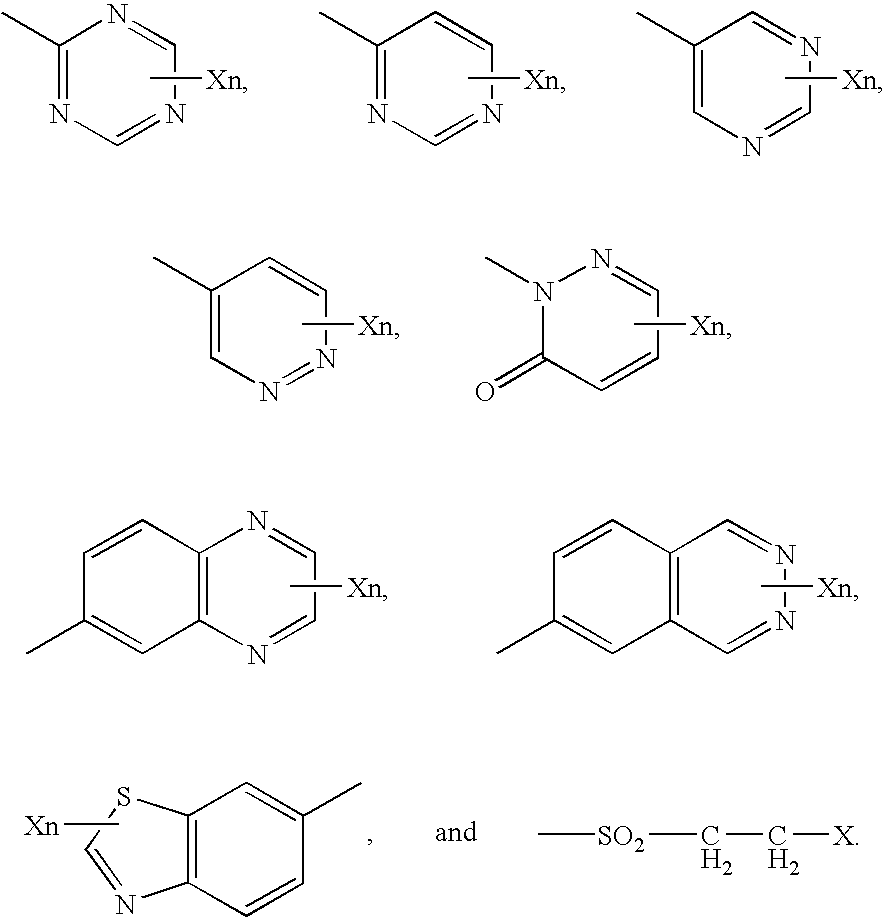Laundry Treatment Composition
a technology of compositions and laundry, applied in detergent compositions, organic/inorganic per-compound compounding agents, chemistry apparatus and processes, etc., can solve the problems of garment yellowing, reducing the aesthetic value of garments, and dulling whiteness
- Summary
- Abstract
- Description
- Claims
- Application Information
AI Technical Summary
Benefits of technology
Problems solved by technology
Method used
Image
Examples
example 1
[0056] Approximately 1000 ppm solutions of the dyes listed in the table below, were made in ethanol.
[0057] A stock solution of 1.8 g / L of a base washing powder in water was created. The washing powder contained 18% NaLAS, 73% salts (silicate, sodium tri-poly-phosphate, sulphate, carbonate), 3% minors including perborate, fluorescer and enzymes, remainder impurities and water. The solution was divided into 100 ml aliquots and the solvent dyes added from the ethanol solutions to give approximately 5.8 ppm solutions. 1 g of pure woven polyester fabric was added to each of the wash solutions and the solution then shaken for 30 minutes, rinsed and dried. From the colour of the fabric it was clear that dye had deposited to the fabric. To quantify this the colour was measured using a reflectance spectrometer and expresses as the deltaE value compared to a polyester washed analogously but without dye present.
[0058] The results are given below
Dye -ppm inDyesolutiondeltaENo dye0 0.2(to i...
example 2
[0059] Experiment was repeated using polyester fleece fabric. The solvent dyes, solvent violet 13, solvent black 3, solvent red 24, solvent blue 35 and solvent blue 59 gave deltaE's of 6.2, 9.5, 15.8, 13.5 and 1.8 respectively. Again showing they all deposited to polyester fabric.
example 3
[0060] To examine the sensitivity of deposition to formulation components the experiment of Example 2 was repeated, except different wash solutions were utilised as outlined below and 4.9 ppm solvent violet 13 used in solution. In all experiments washes were also conducted without dye, the colour of the cloth compared using a reflectometer and expressed as deltaE. The results are shown below.
Wash conditionsdeltaE0.3 g / L SDS surfactant7.00.3 g / L SDS surfactant + 3 g / L8.3NaCl0.3 g / L SDS surfactant + 3 g / L4.7NaCl + pH adjusted to 10.5using NaOH0.3 g / L SDS surfactant + 3 g / L4.2NaCl + 0.5 g / L 7EO nonionicsurfactant1.6 g / L surfactant5.5
[0061] Dye was deposited to the polyester in all cases.
PUM
| Property | Measurement | Unit |
|---|---|---|
| wt % | aaaaa | aaaaa |
| wavelength | aaaaa | aaaaa |
| peak absorption wavelength | aaaaa | aaaaa |
Abstract
Description
Claims
Application Information
 Login to View More
Login to View More - R&D
- Intellectual Property
- Life Sciences
- Materials
- Tech Scout
- Unparalleled Data Quality
- Higher Quality Content
- 60% Fewer Hallucinations
Browse by: Latest US Patents, China's latest patents, Technical Efficacy Thesaurus, Application Domain, Technology Topic, Popular Technical Reports.
© 2025 PatSnap. All rights reserved.Legal|Privacy policy|Modern Slavery Act Transparency Statement|Sitemap|About US| Contact US: help@patsnap.com



